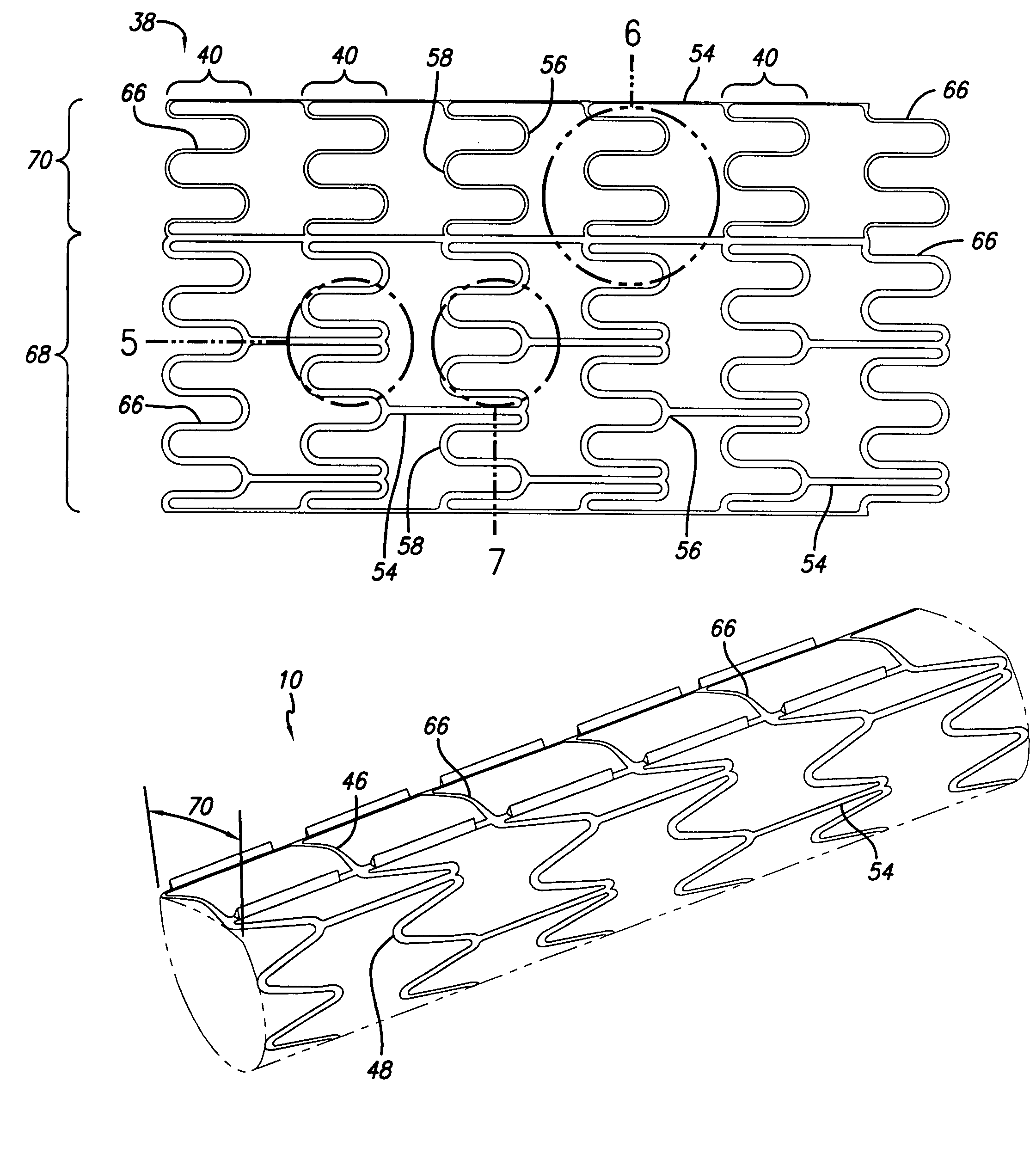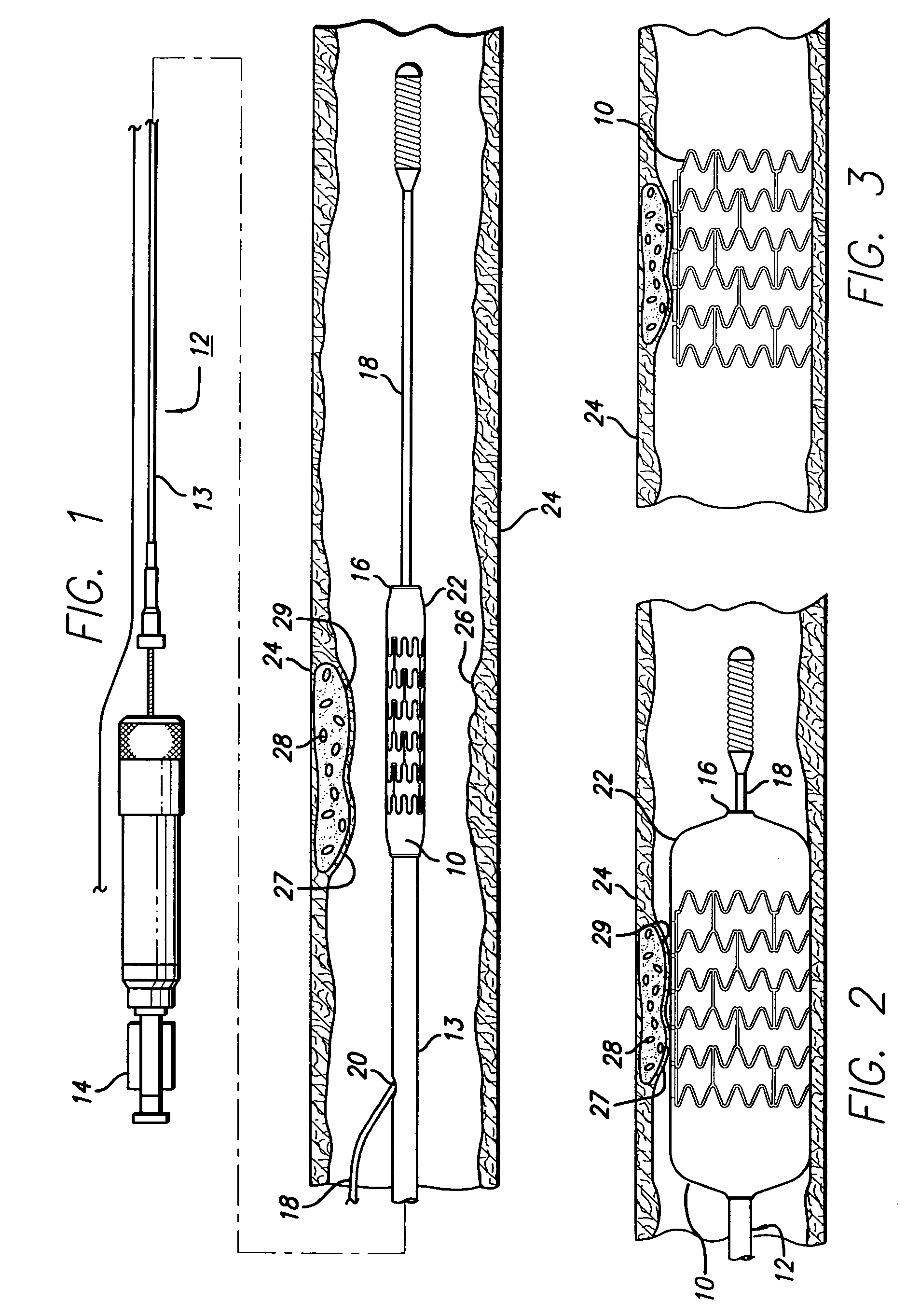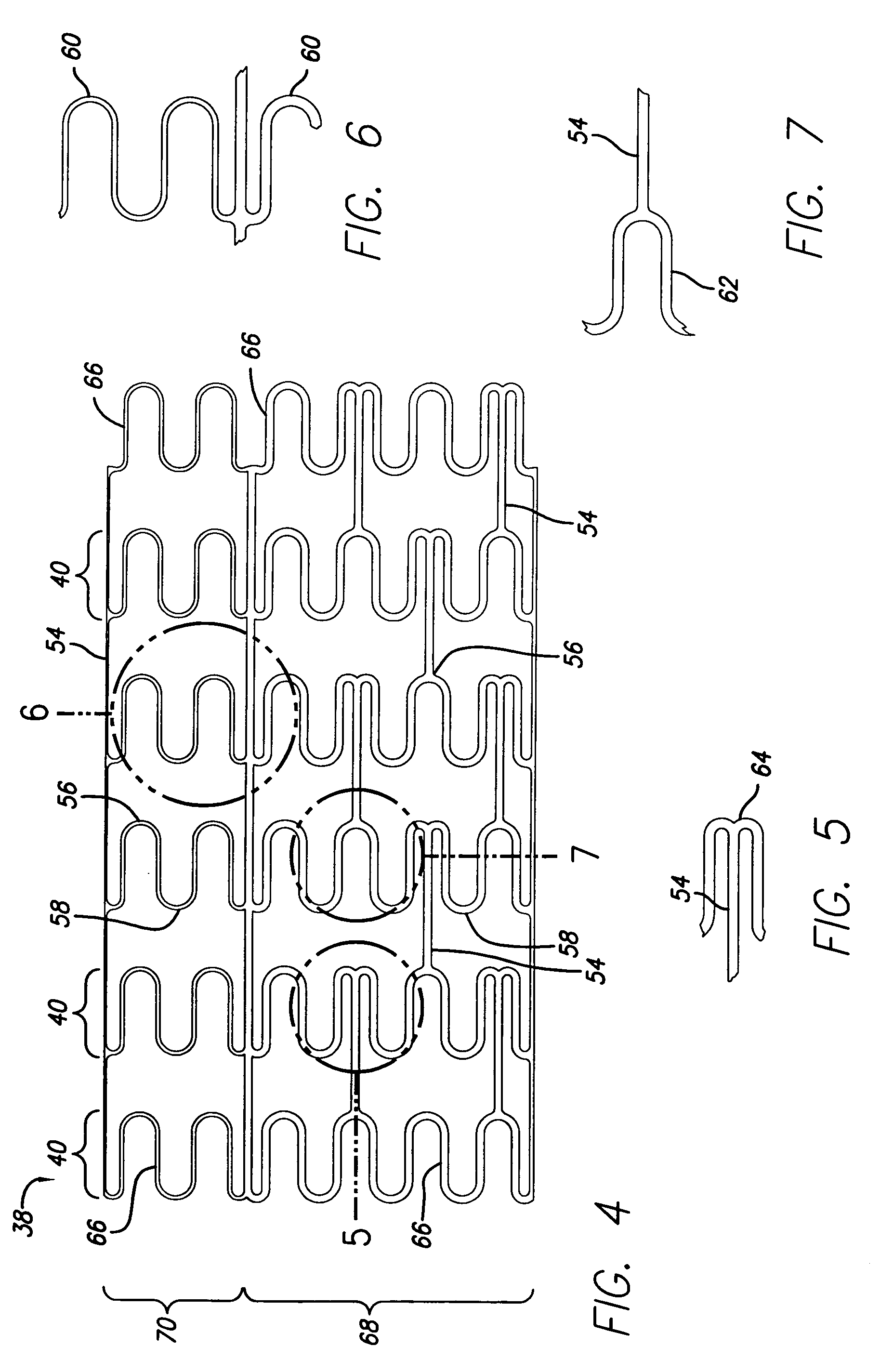Stent with anchors to prevent vulnerable plaque rupture during deployment
- Summary
- Abstract
- Description
- Claims
- Application Information
AI Technical Summary
Benefits of technology
Problems solved by technology
Method used
Image
Examples
Embodiment Construction
[0045]The present invention is directed to an intravascular stent that can be used to treat a lesion with vulnerable plaque by minimizing the cap stresses during stent expansion. The present invention stent in one embodiment provides staged balloon expansion through stronger and weaker regions in the cylindrical wall of the stent, and includes anchors positioned at the circumferential transition between the stronger and weaker regions. During implantation, the anchors radially orient and span the weaker region over the vulnerable plaque during the staged expansion. This minimizes cap stresses and reduces the chance of cap rupture.
[0046]Turning to the drawings, FIG. 1 depicts one embodiment of the present invention stent 10 mounted on a catheter assembly 12 which is used to deliver the stent and implant it in a body lumen, such as a coronary artery, peripheral artery, or other vessel or lumen within a patient's body. The catheter assembly 12 includes a catheter shaft 13 which has a p...
PUM
 Login to View More
Login to View More Abstract
Description
Claims
Application Information
 Login to View More
Login to View More - R&D
- Intellectual Property
- Life Sciences
- Materials
- Tech Scout
- Unparalleled Data Quality
- Higher Quality Content
- 60% Fewer Hallucinations
Browse by: Latest US Patents, China's latest patents, Technical Efficacy Thesaurus, Application Domain, Technology Topic, Popular Technical Reports.
© 2025 PatSnap. All rights reserved.Legal|Privacy policy|Modern Slavery Act Transparency Statement|Sitemap|About US| Contact US: help@patsnap.com



